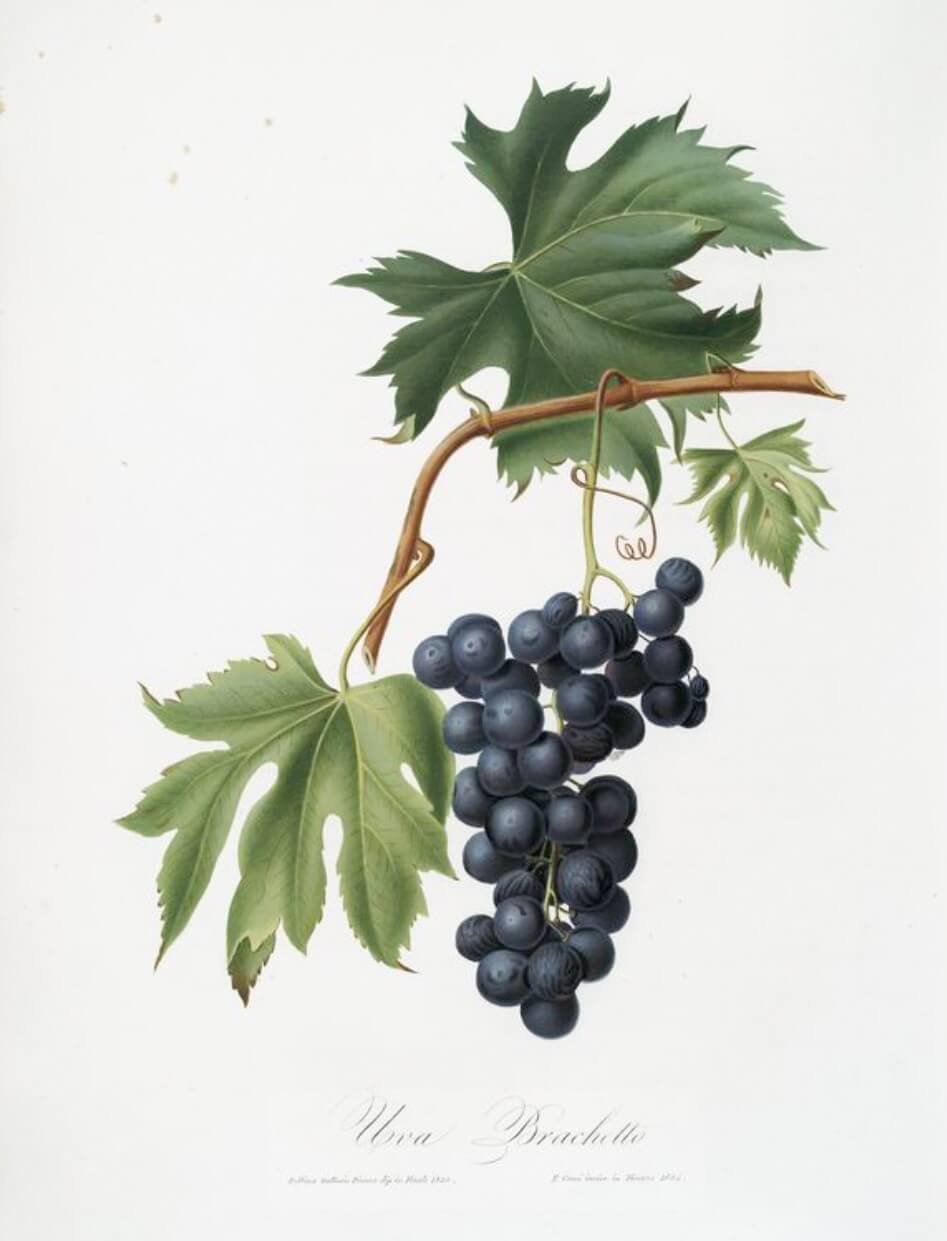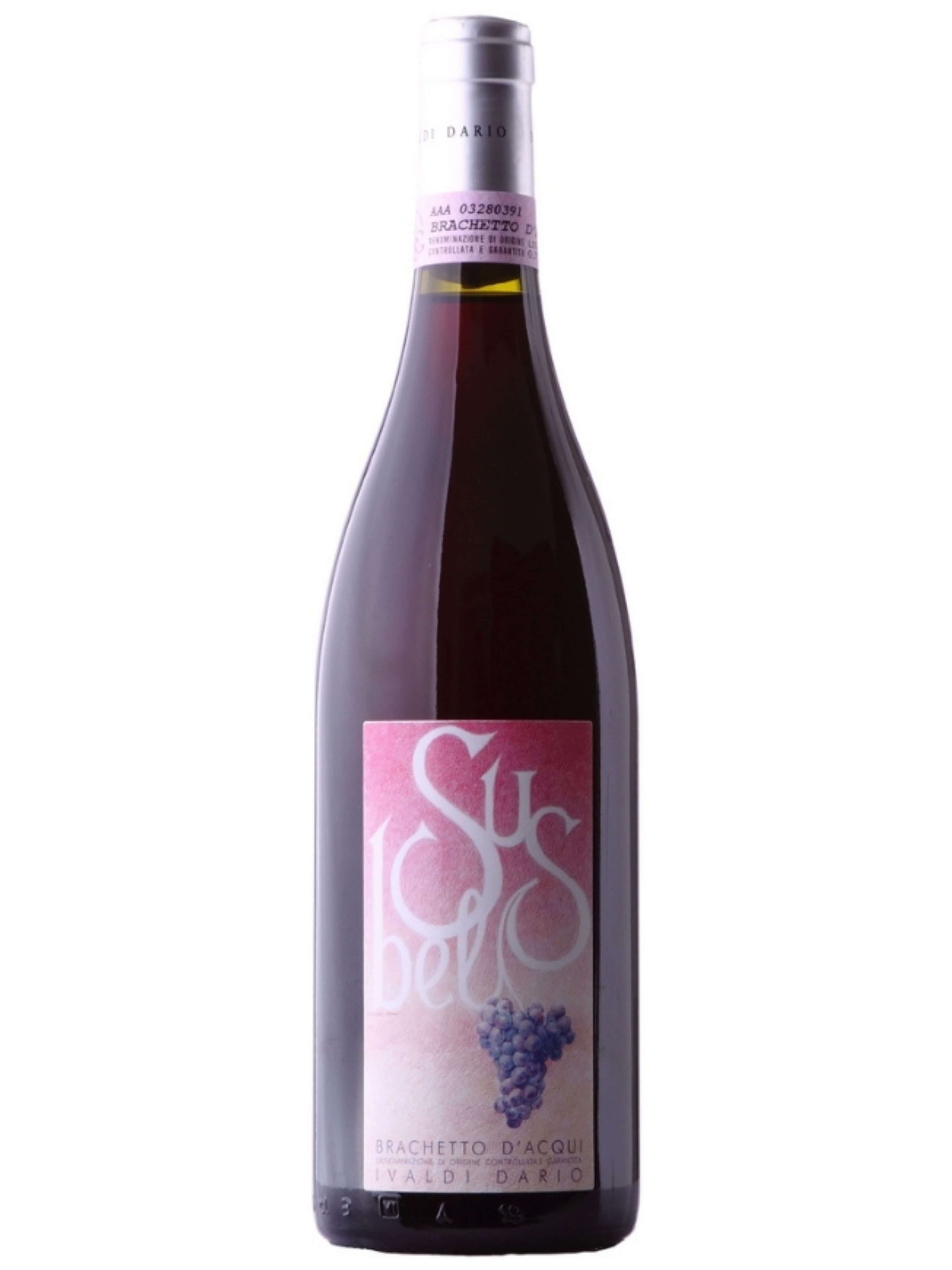A Wine For The People
One of the first times Vero founder Sheila Donohue presented Brachetto d’Acqui to America, she was at a home association’s Cinco de Mayo party in California. With the bottle in hand ready to pour, some people initially declined because they don’t drink wine. Sheila persisted, mentioning that this wine is low in alcohol and easy to drink. The non wine drinkers tried it and loved it.
Likewise at a tasting meeting at a popular natural wine bar in Los Angeles, she decided to try this wine on with the wine buyer. After all, the Brachetto wine we import is made with native yeast fermentation, plus from a producer who is certified sustainable and practices regenerative agriculture. “But” the wine is sweet, not a typical category for a establishment catering to natural wine drinkers. After tasting it, the buyer was taken by the unusual aromatics of this wine, thinking it would appeal to those preferring a low alcohol drink or even an infused cocktail, since the rose, strawberry and hibiscus notes and flavors in Brachetto wine are also found in many infused cocktails.
Then, when approaching the sweet wine naysayers, who drink strictly dry wine, Sheila had to do the most arm twisting. What was her angle? First, this sweet red sparkling wine has tannins, which Andrea Ivaldi, the enologist and 4th generation winery owner purposefully introduces with 3 days of skin contact. Also he wants his sweet wines just to be slightly sweet. And lastly the aromatics and flavor “get them” in the end.
Ready to explore the Brachetto grape and wine? Let’s go!
A Historical Grape and Wine
Just to set the record straight between brachetto the grape and Brachetto the wine: most brachetto grapes are used to make Brachetto d’Acqui, a historic DOCG appellation of aromatic red wines which are most often made as a sweet red sparkling wine. So when people refer to Brachetto wine, you can assume it is Brachetto d’Acqui that they are talking about. You can find Brachetto d’Acqui wines made in other styles, like as a dry wine, but it is not that common because the Brachetto grape produces dry wines that are high in acidity and tannins, making it a bit difficult to produce an “approachable” dry wine. Hence, why the grape lends itself more to a sweet style in which the Brachetto wine goes through a short “arrested” fermentation. In this way, you get all of the benefits of the aromas and taste of this aromatic grape without imposing too much tannins.
The appellation is called Brachetto d’Acqui because it calls attention to the town of Acqui in the Asti province in Piedmont Italy, where the grape is from, including surrounding areas like Nizza Monferrato where the Ivaldi Dario winery is based. Acqui is a city which goes back to Roman times, and is still known for its natural hot springs. In fact, when you go to visit this spa town, there are fountains where you can see the steamy thermal water flowing.
Today, at least in the US, Brachetto wine is hard to come by. In fact, wine critic VinePair, in a recent review of the best sweet wines, wrote “can we make Brachetto popular, please?”
At the center of Acqui Terme you find this pavilion with thermal waters up to 167 degrees Fahrenheit. No wonder why they call it La Bollente, literally “the boiling”.
One way to make it popular is to spread the rumor that Brachetto is an aphrodisiac. This actually is a “real” legend behind Brachetto. Back in the days when Romans hobnobbed with Cleopatra (and the like), there was talk about a wine called “Vino Acquense” which was apparently what the Roman Emperor brought with him to attract Cleopatra and her court. And guess where “Vino Acquense” comes from? You guessed it: Acqui!
Then, fast forward to the 1800s in Italy, Brachetto was referred to as a “Vino Celebe” meaning a prestigious wine. Brachetto wine gained traction in the 1800s in Italy and then got its official designation in 1922 from the head of the wine institute of Asti, Ettore Garino Canina. He called Brachetto a “luxury wine”, putting it in “the category of sweet and aromatic red wines”, saying “it is a wine with special aromas, moderate levels of alcohol and sugar, with a light red color, and mostly made as a sparkling wine."
20 years ago, when our founder was studying to become a sommelier in Italy, her curious peaked about Brachetto d’Acqui when her sommelier instructors were raving about this wine she never heard of. Brachetto holds a special place in Italian culture and traditions: across Italy, it has become a wine to have when you have guests over. Why? Because it is a wine that has a lot too it, yet it is so easy to drink. Plus, Italians when they dine, they tend to have several different wines over the course of a meal, with Brachetto being a common wine of choice with desserts, pairing simply just with strawberries, or with the traditional Italian Easter cake, colomba. Brachetto even pairs with savory dishes like goat cheese, or you can experiment with other dishes, say with Mexican food. Brachetto is also great for just sipping on its own: with its touch of effervescence, it can be a fun wine to have at celebrations, such as for Mother’s Day (hint, hint!)
You could almost say that the brachetto grape is the red version of moscato bianco: they are both aromatic, both traditionally made as a sweet sparkling wine in a similar style, using the Asti method which we mentioned in this previous article. Coincidentally both grapes come from the Asti province of Italy. In fact, in VinePair’s review of Ivaldi’s Brachetto, they wrote “if you love the mild kiss of sweetness that Moscato provides, the Brachetto grape from the same region should be your new go-to.” Although Brachetto’s aromatics are of course different from Moscatos, with rose being a dominant aroma, which, in fact, you even smell while walking through a vineyard of Brachetto grapes on the vine!
What Do Others Have to Say About Brachetto?
If you know us by now, you know that we are big fans of sweet wines for the masses…BUT, it has to be a “good” sweet wine. A recent article in Vogue talked about the best sweet wines to explore. They recommend sweet wines for their complexity, aromas, flavors, and versatility, like in food pairing both with desserts and savory dishes. In the article, they called out Brachetto d’Acqui as one dessert wine to try. They suggest having Brachetto as a brunch wine due to its effervescence and low alcohol, and “its notes of bright berries and a fresh, stony finish. ‘Make it your breakfast wine and pair it with Pain Perdu,’ says Hotel Chelsea’s wine director Claire Paparazzo.”
Ivaldi’s Brachetto and strawberries is a match made in heaven.
To get another wine professional’s take on Brachetto, we recently sat down with award winning wine writer, marketing & events specialist and owner of Please the Palate agency, Allison Levine, who said: “When I first moved to Italy, in Piedmont, I had no idea what Brachetto was. All I knew is that it was so good and loved its slight sweetness and slight effervescence, and it reminded me of fresh strawberries. This was in the mid 90s before I started to work in wine. Yet, I am still a fan of this wine: it is fresh and not cloying, it’s great with chocolate or strawberries and whipped cream. It is not a complicated wine but also is not simple. To me it is happiness in a glass.”
When it comes to Ivaldi’s Brachetto d’Acqui, which is fondly called “Susbel” referring to the name of the vineyard which got its name due to the intense sun exposure, VinePair says “This bottle is a wonderful starting point with balanced notes of honey fruit, strawberries, and flower petals gracing the nose. The palate is welcoming with calm bubbles, round fruit, and a wonderful finish. Ivaldi Dario really knows what he's doing here — now lets make this grape popular starting with his bottle!”
Here here!
Try This Incredible Brachetto
When people taste Ivaldi’s Brachetto, they notice a potpourri of rose and wild strawberries that hits you in a fun and delicate way that gently transitions to the flavors you get when tasting. The floral element continues with remnants of hibiscus that you get on the back palate. All the while, you get the structure with slight tannins and acidity to balance out the slight sweetness.
We sell our portfolio of authentic, wild and scarce farm-to-glass wines and olive oils to businesses and consumers across the US:
If you are a distributor reach out to us introduce our highly curated portfolio of one of a kind small production wines to your state.
We sell to wine stores and restaurants in certain states - contact us to learn more.
If our farm crafted wines and olive oils are not in your local shop or restaurant, you can buy wine online here, and we’ll ship it to you, including wine gifts.
We also have an award winning wine club for true wine explorers that are seeking to continually discover unique, sustainable and authentic small production wines they never had. These are wines selected by our sommeliers and curated for each box.
We do corporate gifts and sommelier guided wine tastings. Email us and we’ll tailor unique and sustainable corporate gift ideas.





